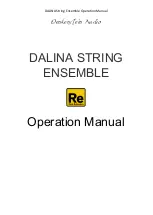
PSY-201 User Guide
GP-UM-PSY-201-11
Page 66 of 105
φ
2
= 90
−
2ELPA ELPA
=
φ
1
For the PSY-101, the user could set or query the SOP using either Stokes parameters or
ellipse angles.
The PSY-201’s GP format command list allows the user to set or query the SOP using
Stokes parameters, spherical coordinates or ellipse angles. However, because of the changes in
range and terminology, PSY-101 users will have to modify programs that use the polarization
ellipse angles.
PSY-101 PSY-201
Command
Function
*SOP:ANG#
*SOP:EANG#
Format response to SOP query as ellipse angles
*SOP?
*SOP?
SOP query. The query is the same, but the response format
for ellipse angles is different.
PSY-101: *THA 100,PHI 20#
PSY-201: *SOP 100,20#
*SOP:THA fff.ff#
*SOP:AZM fff.ff#
Set polarization ellipse azimuth angle.
Angle conversions:
For
0<
θ
1
≤
90°, AZM =
θ
1
For
90<
θ
1
<180°, AZM =
θ
1
−
180°
*SOP:PHI sff.ff#
*SOP:ELPA fff.ff#
Set polarization ellipse ellipticity angle.
Range:
−
45 to +45 degrees for both PSY-201 and PSY-101.
Other differences in the command lists:
1.
Manual control: In the PSY-201, the user can adjust the control voltages to 4 channels of the
polarization controller, not 6. Any commands to control channels 5 or 6 need to be removed.
2.
The PSY-201 does not have the *ADV:MAX n# command. If this command was used in a
program, it must be removed.
3.
The mode options are different, so if a program uses the *MOD? or *MOD n# commands, the
user needs to be aware that these may need to be changed.
4.
The setup for the trace scan is different, because the available trace scan axes are different in
the PSY-101 and PSY-201. Programs that use the trace scan function may need to be changed
accordingly.
Figure 25 PSY-101 trace scan options: n = 1 (0°), 2 (45°), 3 (90°), 4 (
−
45°), 5 (S3=0).
0º trace
90º trace
45º trace
-45º trace
S3= 0 trace














































